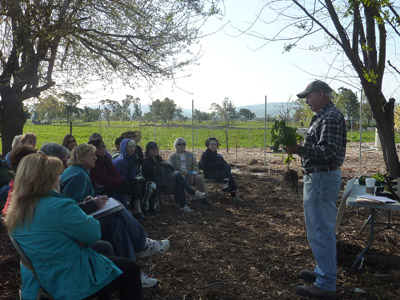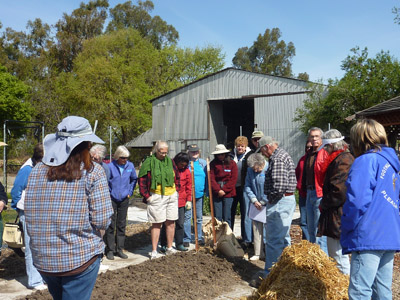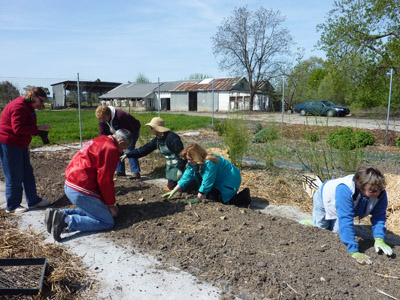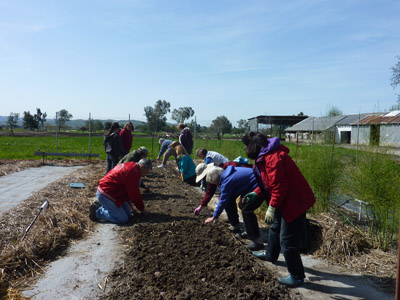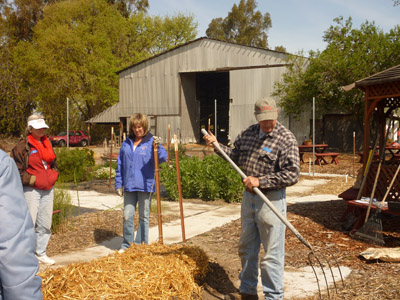Edible Gardening Group
Compost Workshop - Camp Arroyo
Printable version Notes prior to workshop
In April we had a workshop on potatoes and other root vegetables such as carrots and beets.
You can expect a 10 - 15% return on your potato planting. So each pound of potatoes can potentially lead to a harvest of 10 - 15 lbs. We bought our seed potatoes from Lockhards in Stockton for 55 cents a pound so a very reasonable investment. Another good source is the Irish Eyes catalog. You can save your own potatoes if they are not diseased. Most potatoes from the grocery store have been treated with a growth retardant to stop them sprouting so this is not a good source for planting potatoes.
Store potatoes in a cool moist environment but not a refrigerator because the starch turns to sugar. Yet another good use for a root cellar, if we all had one but under the house is another good option. They can also be stored in the ground where you had them growing. If frost threatens, throw a row cover over them or if there is lots of wet weather, cover them with plastic.
We used the straw method as it definitely seemed the easiest option and one Jim has had success with.
We prepared the planting bed the week before by digging in aged manure, alfalfa meal and azomite. We (actually Jim) worked the bed so it was a pretty nice tilth and slightly raised. Heavy rain was predicted so we covered the bed with plastic during the rain storms and then removed it as soon as the sun came out.
We cut the potatoes up the night before if they were smaller than the size of an egg and tried to make sure that each segment has 2 - 3 eyes.
The potatoes were lightly pressed into the soil about 12 inches apart and then we spread it with an inch or two of compost and aged manure to cover the potatoes. If the bed is dry, you should water the soil but that was not necessary for us.
Cover the bed with thick layer (5-8") of straw and that should be it. Water once the soil feels dry underneath the mulch. The potatoes should grow up through the straw.
Once the plants have started flowering, stop watering and once the plants start to die down, start harvesting. You can start harvesting small "new" potatoes as soon as they are big enough, just gently reach into the straw and topsoil and remove them without disturbing the rest on the plant.
Jim did say to dust the cut potatoes with sulfur as a precaution against disease setting in and causing the potatoes to rot. We didn't do that with ours so we shall see, especially after all this rain!
BEETS AND CARROTS
Plant in early fall through September and October and again in Spring. Do not plant in winter. These are some of the few crops that cannot be started in containers - they need to be directly seeded into the ground in a full sun location. In the spring use a row cover to keep moist and for protection and/or shade cloth (50-60% strength) if the weather turns warm.
Carrots and beets need a fine loose soil so work the soil to a fine tilth 10-12 inches deep. The planting area should have a level, fine surface. Carrot seeds are small so they can be mixed with coarse sand to prevent over planting and to reduce the need for excess thinning of the seedlings once they have sprouted. Carrots are slow to germinate and if they dry out for 3 to 4 hours, it's all over and you need to start again. Plant the seeds in a shallow furrow. Beets should be harvested once they are the desired size. If you leave them in the ground too long, they become tough. Carrots on the other hand can be left in the ground until you are ready to use them. If lots of rain is predicted, you can cover the bed with plastic.
